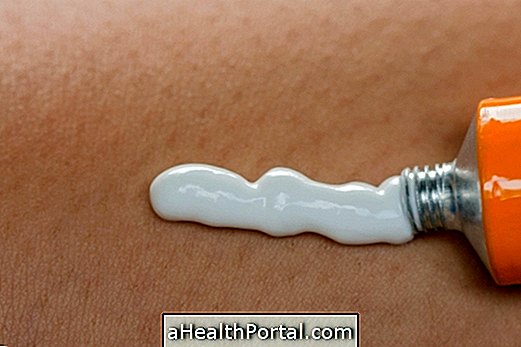The uterus bicorno is a congenital anomaly in which the uterus, which usually has a pear shape, has an abnormal morphology, in which there is a membrane that divides it into two parts, which may cause a total or partial division.
Usually no treatment is needed for the bicornia uterus, unless the woman has difficulty becoming pregnant due to this condition.

What are the signs and symptoms
Usually, the bicornic uterus does not cause symptoms, and is often discovered only during an ultrasound, as early as adulthood. However, some women may experience discomfort during ovulation, abdominal pain, pain during intimate contact or irregular menstruation.
Many women with bicornic uterus have a normal sex life and also have pregnancies and births without problems, but in some cases this malformation in the uterus can cause infertility, miscarriage, premature birth of the baby or abnormalities in the kidneys.
Possible causes
People with bicornic uterus are already born with this problem because the malformation still occurs during gestation. It is not known why this anomaly happens, but it is thought to be a hereditary disease.
Pregnancy with bicornic uterus
Usually a bicornic uterus does not affect fertility, but in some cases it can cause miscarriage or premature delivery due to reduced uterine size or the occurrence of irregular uterine contractions.
In addition, several studies have shown that women with bicornic uterus are 4 times more likely to have a baby with malformations and therefore it is very important to have regular checkups during pregnancy and to be alert to any sign of the common. Usually these pregnancies are treated as risky pregnancies and it is very likely that the delivery will be by caesarean section.

How is the diagnosis made?
There are several tests that can be performed to diagnose the bicorn uterus:
- Ultrasound, in which images are captured through a device that can be placed against the abdominal region or inserted into the vagina;
- Magnetic resonance imaging, which is a painless procedure that uses a magnetic field and radio waves to create transverse images of the inside of the body;
- Hysterosalpingography, which is a gynecological examination in which a dye is injected into the uterus and as the contrast moves through the reproductive organs, X-rays are taken to determine the shape and size of the uterus.
Usually, before going through these tests, the doctor performs a pelvic examination, which consists of the visual and physical examination of the woman's reproductive organs.
What is the treatment
Generally, women with bicornic uterus who do not show signs or symptoms, do not need treatment.
However, if symptoms occur that cause a lot of discomfort or if the woman can not conceive or maintain a pregnancy due to this condition, surgery can be performed.






















